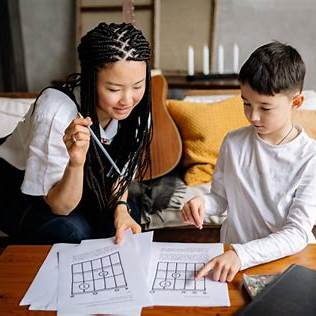Listening isn’t just about hearing words—it’s about processing, remembering, and responding appropriately. For children with ADHD, this skill can be especially difficult due to distractibility, impulsivity, and working memory challenges. But with the right strategies, your child can improve their listening abilities in ways that strengthen both learning and relationships.
Why Listening Is Challenging for Children With ADHD
Children with ADHD may:
- Zone out or get distracted mid-instruction
- Interrupt before the speaker finishes
- Forget what was said minutes later
- Appear disinterested even when they are trying
These behaviors often reflect how their brain processes information, not a lack of care or respect.
1. Get Their Attention First
Before speaking:
- Say their name and wait for eye contact
- Gently touch their shoulder
- Eliminate background distractions (TV, loud music)
Engagement starts before the instruction.
2. Use Clear, Concise Language
Keep it short and to the point:
- Instead of: “Go to your room, get your shoes, and grab your backpack.”
- Say: “Grab your shoes. I’ll remind you what’s next.”
Break instructions into one step at a time to prevent overload.
3. Ask for Repetition
Have your child repeat back what they heard:
- “What did I just ask you to do?”
- “Can you say it in your own words?”
This checks comprehension and helps reinforce memory.
4. Pair Verbal Instructions With Visuals
Use:
- Checklists
- Picture cards
- Whiteboards or sticky notes
Visual support complements verbal language and builds independence.
5. Practice “Whole Body Listening”
Teach them that listening involves:
- Eyes looking
- Mouth quiet
- Hands still
- Brain focused
Make a poster or visual to reinforce this at home.
6. Turn Listening Into a Game
Make practice fun:
- “Simon Says”
- Story games: “Tell me what I just said, but backwards.”
- Role-play giving and following directions
Play reduces pressure and increases engagement.
7. Minimize Background Distractions
During conversations or homework:
- Turn off screens
- Close unnecessary tabs or apps
- Use noise-canceling headphones if helpful
Less noise = more attention.
8. Set Expectations Before Giving Instructions
Say:
- “I’m going to give you two directions. Are you ready?”
- “This is important—can you focus with your listening ears?”
Priming the brain increases readiness.
9. Use Praise to Reinforce Listening Efforts
Catch them doing well:
- “Thanks for listening the first time!”
- “I liked how you stayed focused while I explained that.”
Positive reinforcement helps the behavior stick.
10. Be Patient and Model Listening Yourself
Show active listening by:
- Making eye contact
- Repeating what your child says
- Responding calmly and attentively
Modeling is the most powerful teaching tool.
Final Thought
Listening is a skill—and like any skill, it improves with practice, encouragement, and support. By creating a calm environment, offering visual aids, and making listening interactive, you’ll help your ADHD child tune in more effectively, with more confidence and less stress.
They may not get it perfect—but every time they listen with intention, they’re getting stronger.
Here at home I’ve already noticed that if I give 3 orders at once, one of them will be left behind. So, without stress, I adapted. I give 2 commands and then when they are executed, I add another one. Today, at 13 years old, my son already complains, but ends up doing it. It’s worked!
